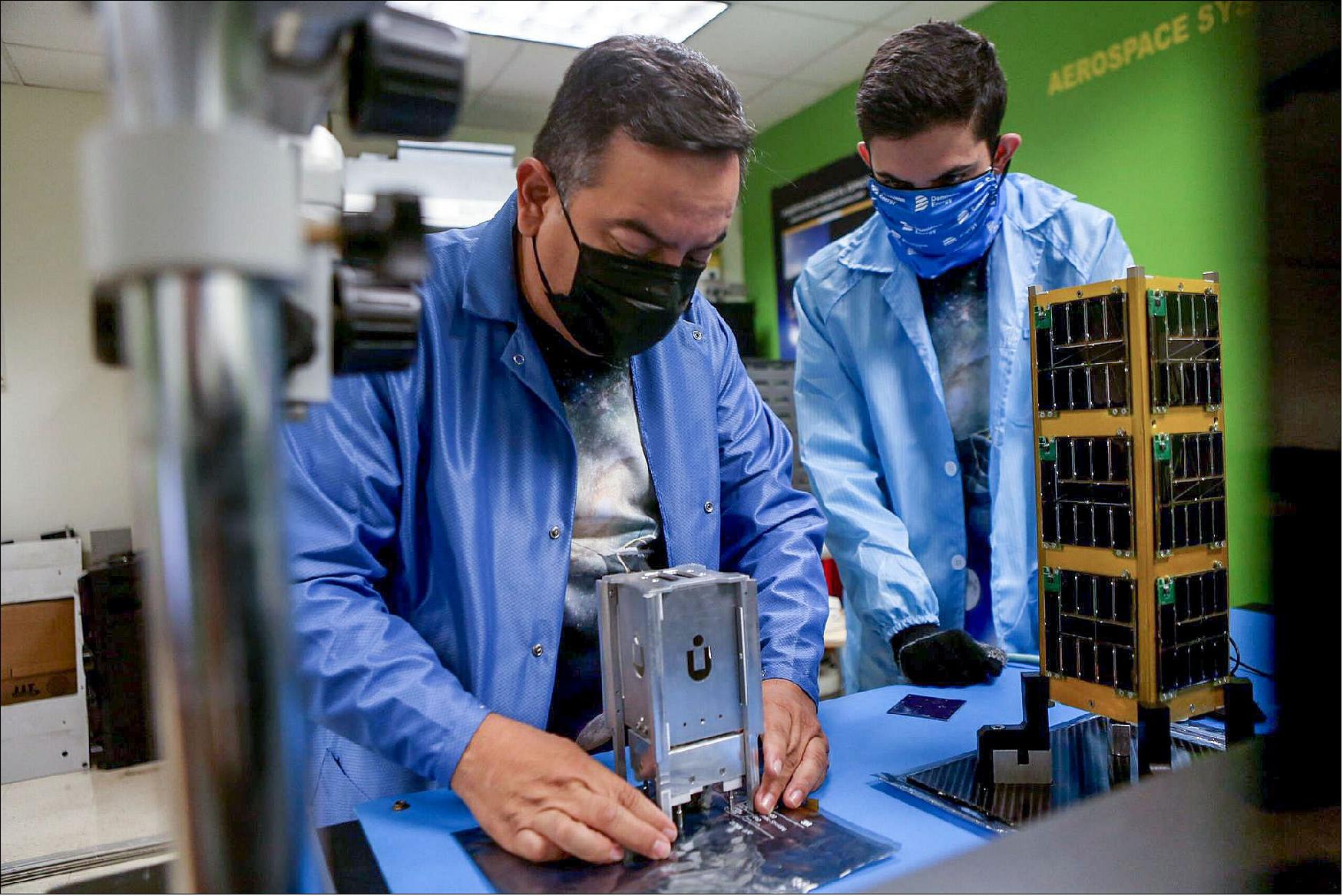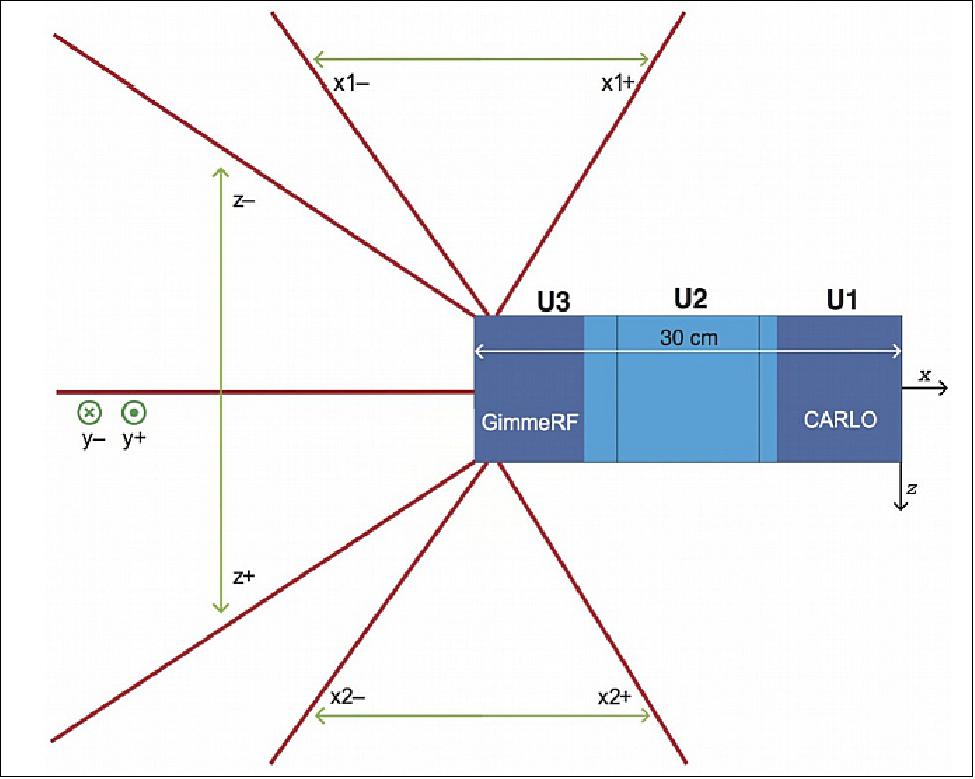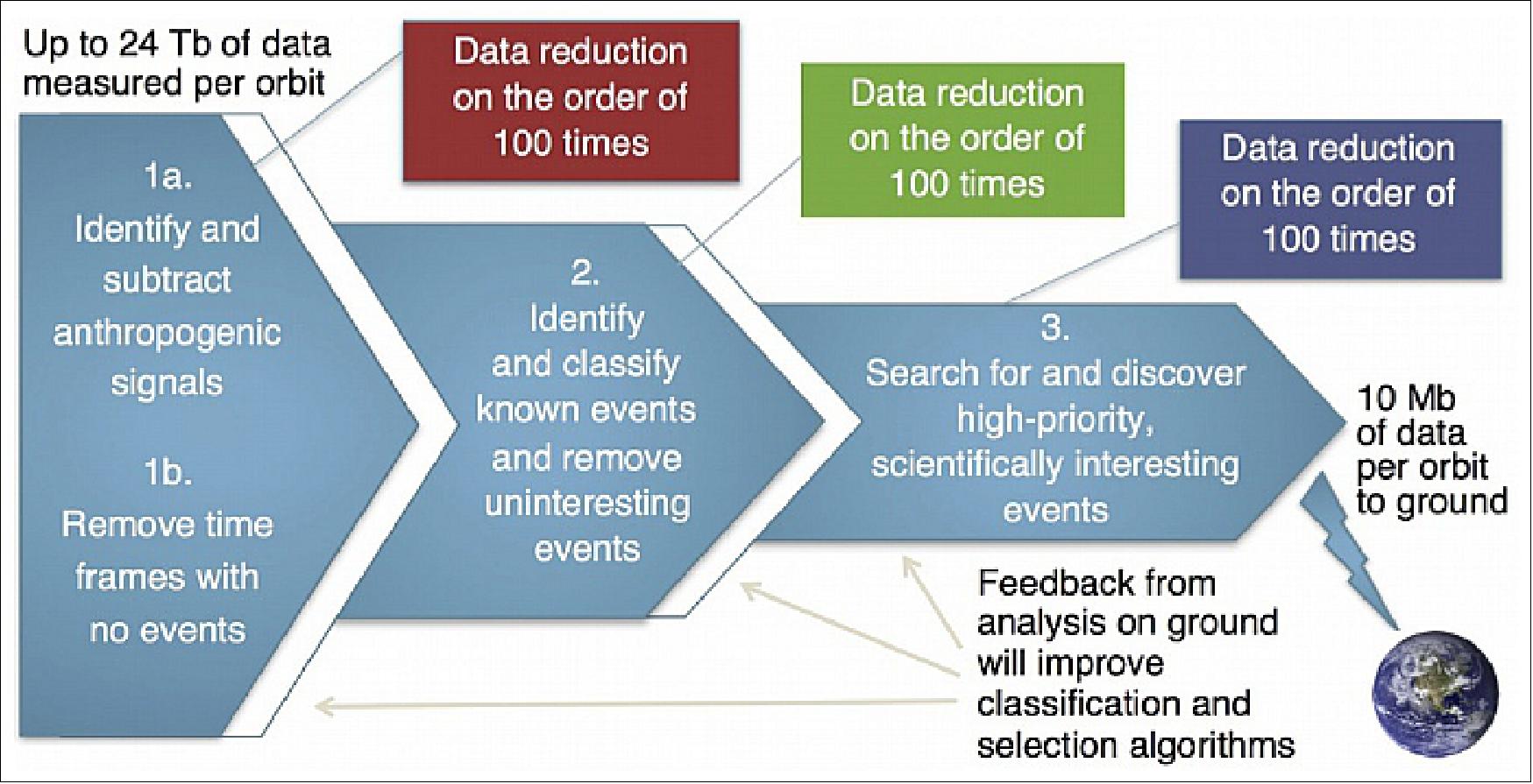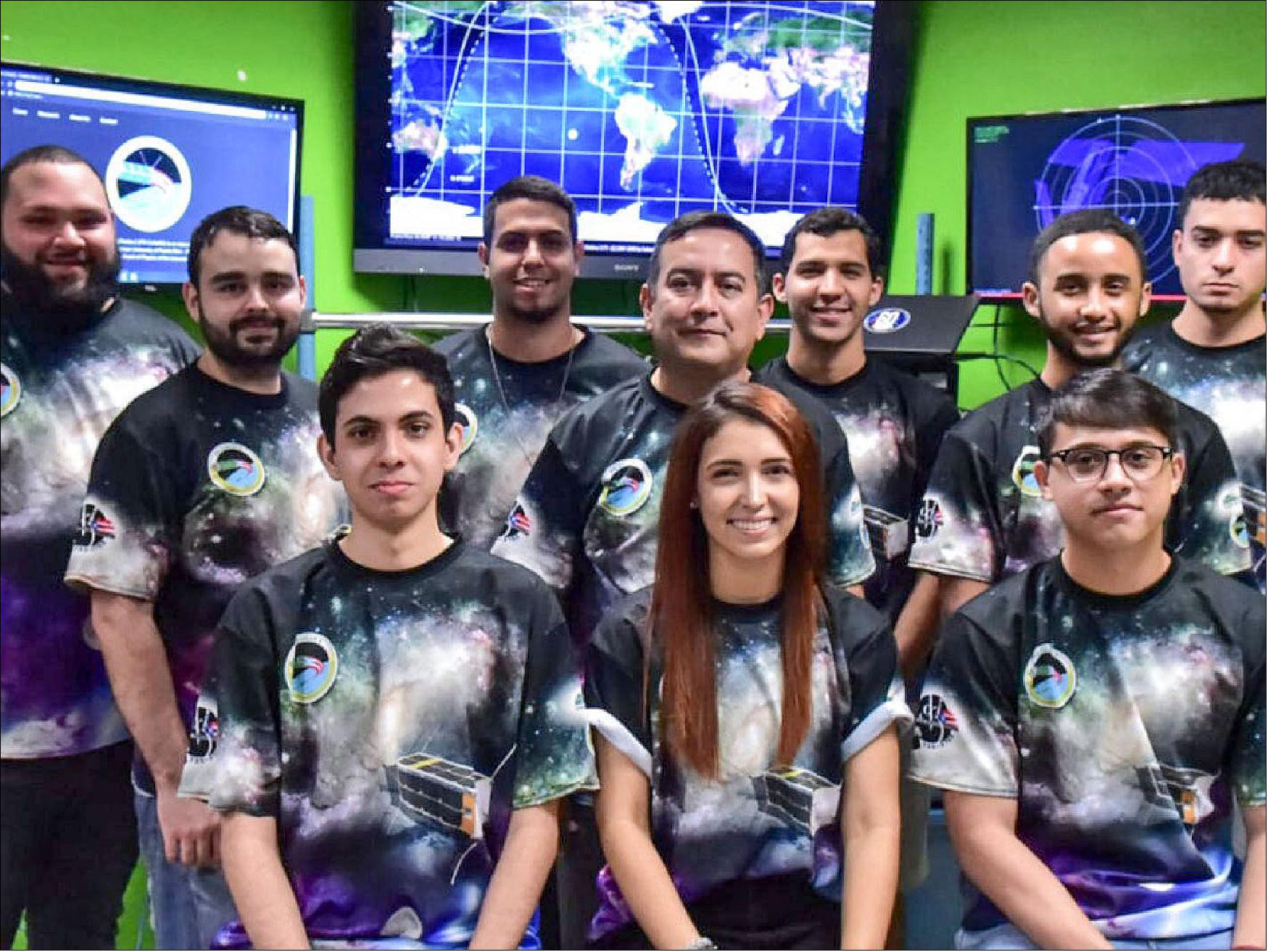PRCuNaR2 (Puerto Rico CubeSat NanoRocks 2)
Non-EO
Operational (nominal)
Education
Technology and Research
Quick facts
Overview
| Mission type | Non-EO |
| Mission status | Operational (nominal) |
| Launch date | 29 Aug 2021 |
PRCuNaR2 (Puerto Rico CubeSat NanoRocks 2)
Spacecraft Launch Sensor Complement References
PRCuNaR2 is an educational and scientific collaboration between Inter-American University of Puerto Rico – Bayamon Campus, the Florida Space Institute and Department of Physics of the University of Central Florida (UCF). Over the last three years, approximately 65 students have been part of the development of the PRCuNaR2. 1)
The objective of PRCuNaR2 is to study low-energy collisions in a space environment. The CubeSat from this investigation takes advantage of the prolonged microgravity exposure in LEO (Low Earth Orbit) to obtain a large sample of collisional outcomes at very low velocities (<10 cm/s).
Research Overview
• PRCuNaR2 uses a mechanically shaken device to study low-energy particle collisions, such as those that happen on Saturn’s rings.
• A camera within the CubeSat allows investigators to study collision parameters (mass, density and composition of particles, and collision velocities) that lead to particles sticking, rebounding, and/or aggregating.
• This study gathers valuable data on collision outcomes to lower speeds and collisions between aggregates with a range of sizes and structural properties, including different proportions of dust and chondrules.
• Collision data is used to numerically model the particle size distribution near the meter-size barrier and through planetesimal growth and tie the particle sizes and shapes to the constraints offered by the planet-forming protoplanetary disks observed around young stars today.
Spacecraft
The PRCuNaR2 is a 3U (10 x 10 x 30 cm) configuration. It will orbit at about 400 km altitude in a high inclination orbit. Active attitude control will be used to align the long (3U) axis along the orbital path, and the satellite will spin around the 3U axis to assist in thermal management. Control of the satellite and downloading of data will be via a 915-MHz radio communications system.
The CubeSat is divided into nine chambers, with different materials inside. Once deployed from the ISS, the particles will be allowed to float about and combine with each other. Through photos and videos collected by the satellite's onboard cameras, researchers at the university will be able to examine the collisions between the particles in detail.

Launch
The PRCuNaR2 is a passenger payload (a 3U CubeSat) on the CRS-23 (Commercial Resupply Services) mission of SpaceX to the ISS, launched on 29 August 2021 at 7:14 UTC from Launch Complex 39A (LC-39A) at the agency’s Kennedy Space Center in Florida. Dragon is packed with more than 2,200 kg of supplies, scientific experiments and hardware, including a new robotic arm that will be tested inside the space station's Bishop Airlock. 2) 3)
Orbit
Near circular orbit, altitude of ~ 400 km, inclination = 51.6º, period of~92 minutes.
Passenger Payload Missions on the CRS-23 Flight of SpaceX to the ISS
• AMBER IOD-3 (In Orbit Demonstration-3), a CubeSat of Horizon Space Technologies (UK), built by ÅAC Clyde Space to provide signal data for the country’s National Maritime Information Centre (NMIC). L3Harris Technologies is assisting with the payload’s development.
• Binar-1, a CubeSat, a team of students and engineers at Curtin University's Space Science and Technology Centre in West Australia developed the state-of-the-art Binar-1 CubeSat.
• CAPSat (Cool Annealing Payload Satellite), a CubeSat of UIUC (University of Illinois, Urbana Champaign) to perform quantum annealing experiments.
• CUAVA-1 (ARC Training Centre for CubeSats, UAVs & Their Applications), a 3U CubeSat, developed by the UNSW (University of New South Wales) based Centre for CubeSats and the University of Sydney. 4)
• PR-CuNaR2 (Puerto Rico CubeSat NanoRacks-2), a 3U CubeSat developed by students of the Inter-American University of Puerto Rico’s school of Engineering in Bayamón Campus - in cooperation with the Florida Space Institute and the Physics Department of the University of Central Florida (UCF).
• SPACE HAUC (Science Program Around Communications Engineering with High-Achieving Undergraduate Cadres), a 3U CubeSat (4 kg) of UMass (University of Massachusetts) at Lowell.
• Maya-3 and Maya-4, two 1U CubeSats of the University of the Philippines-Diliman and Kyushu Institute of Technology, Japan.
• OSCAR-QUBE (Optical Sensors based on CARbon materials: QUantum BElgium), a 1U CubeSat, built by students of Hasselt University, Belgium.
Sensor Complement
The scientific payload for the PRCuNaR2, is an experimental setup for the exploration of low-energy collisions in the protoplanetary disk and in planetary ring systems, such as Saturn’s rings. The experiment builds on a precursor experiment, NanoRocks on NanoRacks, that flew on the International Space Station and addresses questions raised by that experiment and that could not be explored on the ISS. The experiment will take advantage of the long duration and high quality of microgravity provided by a CubeSat in Low-Earth-Orbit (LEO) to obtain a large sample of collisional outcomes at very low velocities (<10 cm/s). The experiment consists of chambers containing different populations of particles that are mechanically shaken to induce collisions between the particles. Video of the collisions will indicate the collision parameters (mass, density and composition of particles, and collision velocities) that lead to sticking, rebound, and fragmentation of aggregates.
GimmeRF (Gimme Radio Frequency)
The objective of Gimme RF is to measure ionospheric radio emissions between 0 to 30 MHz using a direct-sampling receiver board, atmospheric-noise-limited preamplifiers, and electrically short monopole antennas. The antennas will be connected to enable 2D and 3D measurements of the radio electric field, which will make it possible to characterize the signals in terms of their 3D generalized Stokes parameters, and to perform direction finding (Figure 3).
GimmeRF is a high-performance four-channel receiver. It will be able to perform cutting-edge research, and an important capability for that purpose is to perform high-quality 2- and 3-dimensional measurements of the radio electric field, in order to provide the maximum possible information about incoming radio waves. The goal is to record well-calibrated, 3D vector electric field measurements of incident MF/HF waves during energetic natural events, artificial ionospheric modification, and at other times, during a variety of geospace conditions and across diverse geographic regions, and to compare them with ground-based observations. The 3D measurements will allow full polarization and direction-of-arrival studies unique to the geospace region, at high time and frequency resolution. A custom-designed 3D radio antenna, paired with the exceptional capabilities of the GimmeRF instrument, will give GimmeRF the potential for ground-breaking measurements. 5)

At the frequencies measured by GimmeRF, the antennas would be electrically short, making them broadband and requiring active preamplifiers between the antennas and the inputs to GimmeRF. The GimmeRF antennas will be connected to atmospheric-noise-limited differential preamplifiers with a third order intercept (IP3) of +30 dBm. The preamp board can accommodate up to four preamplifiers, whose outputs will be sampled by a four-channel direct-sampling receiver board. The detailed characterization of the directional capabilities of the antenna design will be a product of the modeling and validation of the antenna.
GimmeRF will be capable of continuously recording the entire 0-30 MHz radio band, corresponding to a data rate of up to about 24 Tbit per orbit (assuming a 100 minute orbital period at about 400 km altitude). Through a collaboration with the Aerospace Corporation (El Segundo, CA), the project has access to six 920 MHz ground stations, located in Puerto Rico, Florida, Texas, California, Hawaii, and Guam. There will be about two passes per day per ground station for a total of about 10 Mbit of data per orbit download capacity available to the GimmeRF radio instrument. A factor of about 2.4 x 106 radio data reduction is therefore required (Figure 4). To accomplish this, the project plans to implement artificial intelligence capabilities onboard the CubeSat, for automated selection of the data to be downloaded. 6) For this purpose, GimmeRF incorporates a CPU/GPU and FPGA, together capable of providing up to 2 TFLOPs for on-board data analysis.

Polarization studies of radio turbulence, both natural and artificial, are still in their infancy, and the full polarization capabilities of the proposed antenna, paired with the capabilities of the GimmeRF instrument, will shed new light on the processes responsible for both types of phenomena.
To better understand the radio emissions, downloaded radio data will be correlated with ion turbulence data from CARLO and with geophysical data from other satellites, and from ground-based instruments such as radars, magnetometers, and optical imagers.
CARLO (Charge Analyzer Responsive to Local Oscillation)
The CARLO device is a Faraday cup designed to measure ion turbulence between 0 to 10 kHz, which affects radio propagation in the high-frequency radio band measured by GimmeRF. CARLO will be mounted in a ram configuration, giving it the ability to distinguish between ambient and spacecraft-induced irregularities in plasma density. CARLO will record an average of one turbulence spectrum per second.

References
1) Amilcar Rincon-Charris, Joshua Colwell, Julie Brisset, Adrienne Dove,”The Puerto Rico CubeSat NanoRocks-2 (PRCuNaR2),” Interplanetary CubeSat Workshop, February 2018, URL: https://icubesat.org/papers/2018-2/2018-a-4-1-the-puerto-rico-cubesat-nanorocks-2-pr-cunar2/
2) Amy Thompson, ”SpaceX launches Dragon cargo capsule to space station, nails rocket landing at sea,”Space.com, 29 August 2021, URL: https://www.space.com
/spacex-dragon-crs-23-nasa-cargo-launch-success
3) ”Lift-off for OSCAR-QUBE, now en route to the International Space Station,” ESA Education, 29 August 2021, URL: https://www.esa.int/Education/Orbit_Your_Thesis/
Lift-off_for_OSCAR-QUBE_now_en_route_to_the_International_Space_Station
4) Xueliang Bai, Iver H. Cairns, Patrick Oppel, Youngho Eun, Anthony Monger, Christopher H. Betters, Sergio Leon-Saval, Joe Khachan, James Harpur, Xiaofeng Wu, Yijun Huang, Byung Hoon Cho, Chung Hang Chu, Alex Gaoshan Lian, David Byrne, Flynn Bryant, Daniel Roger Hussey, Mitchell William Galletly, Ada Jiexin Song, Andrew G. Dempster, Joon Wayn Cheong, Ediz Cetin, Tong Wu, Oliver Diessel, Jason Held, Andreas Antoniades, Alix Murdoch, James Unicomb, Paris Michaels, ”The CUAVA-1 CubeSat–A Pathfinder Satellite for Remote Sensing and Earth Observation,” Proceedings of the 35th Annual AIAA/USU Virtual Conference on Small Satellites, August 7-12, 2021, Logan, UT, USA, paper: SSC21-WKII-02, URL: https://digitalcommons.usu.edu/cgi/viewcontent.cgi?article=5112&context=smallsat
5) A. Nehorai, E. Paldi, ”Vector-sensor array processing for electromagnetic source localization,” IEEE Transactions on Signal Processing, Volume: 42, Issue: 2, Feb 1994, pp:376-398, DOI: 10.1109/78.275610
6) J. E. S. Bergman, F. Bruhn, P. Funk, B. Isham, A. A. Rincón-Charris, P. Capo-Lugo, L. Åhlén, ”Exploiting artificial intelligence for analysis and data selection on-board the Puerto Rico CubeSat,” European Planetary Science Congress 2015, Nantes, France, 27 Sept.-2 October 2015, URL: http://meetingorganizer.copernicus.org/EPSC2015/EPSC2015-833-1.pdf
The information compiled and edited in this article was provided by Herbert J. Kramer from his documentation of: ”Observation of the Earth and Its Environment: Survey of Missions and Sensors” (Springer Verlag) as well as many other sources after the publication of the 4th edition in 2002. - Comments and corrections to this article are always welcome for further updates (eoportal@symbios.space).